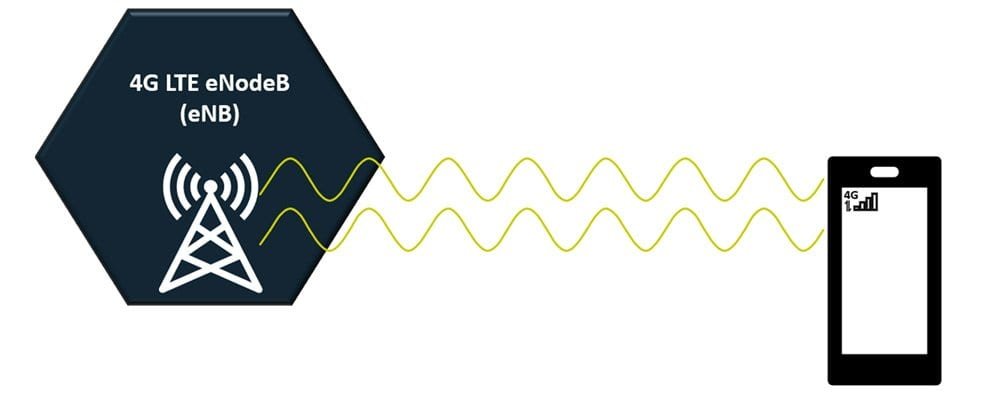Radiofrequency (RF) waves are electromagnetic waves critical in communication, radar, and broadcasting systems. Calculating their frequency is a key task in RF engineering, whether for antenna design or signal analysis. Tools like RF calculators simplify this process, including specialized ones like impedance calculators for coaxial cables. This article outlines how to calculate the frequency of an RF wave, addressing common methods and practical applications for B2B professionals.
How Do You Calculate RF Wave Frequency?
How do you calculate wave frequency when designing RF systems or troubleshooting signals? Frequency, defined in Hertz (Hz), measures cycles per second but isn’t always directly given. Engineers derive it from available data like wavelength, signal period time, or resonant circuit properties to ensure system performance and resolve signal integrity issues.
Analyzing the Problem
Several scenarios arise in RF engineering where frequency calculation is needed:
- Wavelength-Based: RF waves propagate at the speed of light in free space, but slower in media like coaxial cables.
- Time-Based: Frequency relates to the wave’s cycle duration.
- Circuit-Based: Oscillating circuits generate RF waves at specific frequencies.
Each method requires understanding the wave’s context—free space, a cable, or a circuit—and the right formula.
Solving the Problem: Methods to Calculate Frequency
Using Wavelength
The most common approach uses the wave’s speed and wavelength. In free space, the speed of light ( c ) is ( 3 \times 10^8 ) m/s. The formula is:
[ f = \frac{c}{\lambda} ]
Where ( \lambda ) is the wavelength. For example, a 2-meter wavelength yields:
[ f = \frac{3 \times 10^8}{2} = 150 , \text{MHz} ]
In coaxial cables, the speed drops due to the dielectric material. Here, use the velocity factor (VF), typically 0.66–0.85:
[ f = \frac{c \times VF}{\lambda} ]
A 1-meter wavelength in a cable with VF = 0.66 gives:
[ f = \frac{3 \times 10^8 \times 0.66}{1} = 198 , \text{MHz} ]
Tools like a coaxial cable impedance calculator can also provide VF or impedance data, ensuring system compatibility.
Using the Period
Frequency is the inverse of the period ( T ), the time for one cycle:
[ f = \frac{1}{T} ]
If ( T = 5 , \text{ns} ) (nanoseconds), then:
[ f = \frac{1}{5 \times 10^{-9}} = 200 , \text{MHz} ]
This method suits scenarios where timing data is available, measurable via oscilloscopes.
From Circuit Parameters
RF waves often originate from circuits like LC oscillators. The resonant frequency is:
[ f = \frac{1}{2\pi \sqrt{LC}} ]
For ( L = 2 , \mu\text{H} ) and ( C = 50 , \text{pF} ):
[ f = \frac{1}{2\pi \sqrt{2 \times 10^{-6} \times 50 \times 10^{-12}}} = \frac{1}{2\pi \sqrt{10^{-16}}} \approx 15.9 , \text{MHz} ]
This is key for designing RF signal sources.
Why Frequency Matters in RF Applications
Frequency impacts:
Antenna Size: Proportional to wavelength (( \lambda = \frac{c}{f} )).
Signal Propagation: Affects range and penetration.
Impedance Matching: Critical in coaxial cables. A coax impedance calculator ensures cables match the system’s frequency range, minimizing losses.
Tools to Simplify RF Calculations
RF calculators streamline complex computations:
RF Calculators: Compute frequency from wavelength or circuit values.
Impedance Calculator Coaxial Cable: Determines impedance for optimal signal transfer.
Coaxial Cable Impedance Calculator: Assesses cable suitability for specific frequencies.
These tools save time and boost accuracy, ideal for B2B clients seeking efficient solutions.
Practical Example
Imagine a coaxial cable with VF = 0.8 and a 0.75-meter wavelength. Calculate the frequency:
[ f = \frac{c \times VF}{\lambda} = \frac{3 \times 10^8 \times 0.8}{0.75} = 320 , \text{MHz} ]
Cross-check with a coaxial cable impedance calculator to ensure the cable supports this frequency without significant loss.
Conclusion
Calculating natural frequency alongside RF wave frequency via wavelength, period or circuit properties is essential for RF system design and optimization. RF calculators, including those for coaxial cable impedance, improve precision and efficiency. RF engineering teams that master these calculation methods secure reliable performance and unlock tailored solutions. Contact us for expert tools and support.

 Coaxial Cable Assembly
Coaxial Cable Assembly Microwave Test Cable
Microwave Test Cable Coaxial RF Connector
Coaxial RF Connector Coaxial RF Adapter
Coaxial RF Adapter Coaxial RF Termination
Coaxial RF Termination Coaxial RF Test Probe
Coaxial RF Test Probe Coaxial RF Attenuator
Coaxial RF Attenuator RF Switches
RF Switches Coaxial RF Power Dividers
Coaxial RF Power Dividers